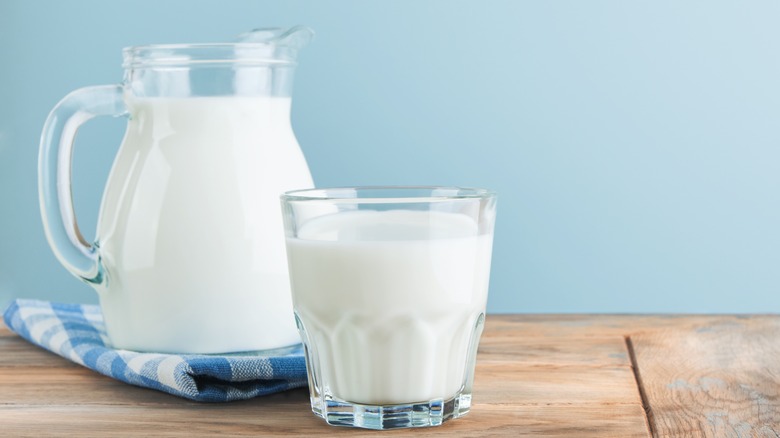Is There Water In Whole Milk?
Milk does a body good, but water is the ultimate source of hydration. When it comes to deciding between the two, which liquid delivers the most benefits? If you're a dairy-lover who prefers the rich taste of whole milk to lower fat alternatives, you may be happy to know that you're still getting a major dose of water — whole cow's milk is about 87% H2O. That means every glass not only gives you the good stuff you've come to expect from cow's milk, but it's hydrating, too.
But what makes up the rest of your serving of milk? Generally speaking, 4.9% is lactose, 3.4% is fat, 3.3% is protein, and then there's a little less than 1% of ash, another name for the minerals you find in milk. Those include calcium, potassium, phosphorus, and a variety of vitamins. Beyond questions of hydration and nutrients, though, it's helpful to note the differences in your milk's makeup if you're planning to use it in the kitchen.
How whole milk's makeup affects your recipes
When it comes to baking, whole milk has more butterfat than low-fat or skim, which promotes moisture and delicacy in your finished products. It also helps make your ice cream creamier, your savory bisques silkier, and, if you like to dunk your cookies, provides a more substantial pairing. If you're trying to follow a simple tip for evaporating your own milk, starting with whole milk makes for a slightly speedier process since there's less water to eliminate through vaporization.
If you just want to drink it, you can use it exactly as is to make the perfect milk foam for flawless latte art. Whole milk also has a lusciousness and fuller body that, combined with butter, makes a perfect foundation for an irresistible French hot chocolate. However you intend to use up that bottle of whole milk, you can be sure that there's plenty of water worked into its natural formula.

